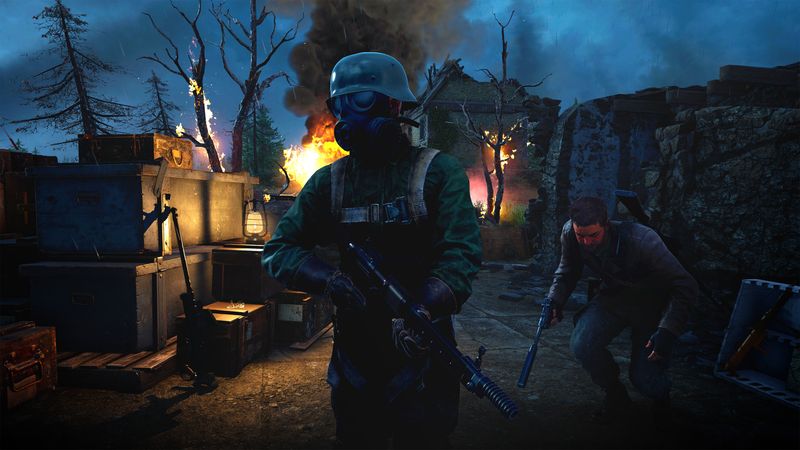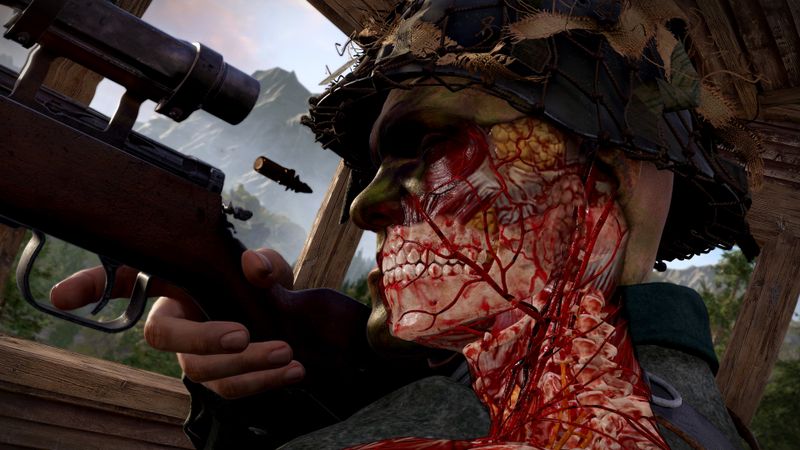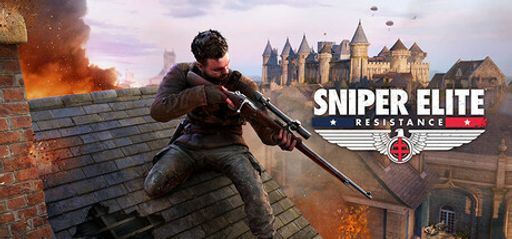I have spent many hours out on the digital battlefield, searching for that game that pushes me to shave seconds off my best times. Sniper Elite: Resistance promised me a hidden war in occupied France with unparalleled sniping mechanics, stealth, and tactical third-person combat. As a passionate speedrunner, I dove in with high expectations. After nearly 20 hours of running through its levels, here are my thoughts on what works, what falters, and where this game sits among its peers in the elite sniping genre.
Overall Impression
At first glance, Sniper Elite: Resistance impressed me with its ambition. Developed and published by Rebellion, the game carries the weight of a celebrated series. Its historical setting in occupied France sparks intrigue. I enjoyed the attempt to blend historical tension with modern, almost over-the-top, sniper mechanics. The premise of resisting oppression in hidden, off-frontline battles adds a certain charm. However, the game struggles to maintain the intensity I look for as a speedrunner. I found clear signs of repetition and missed opportunities for deeper innovation.

Gameplay Mechanics
The core gameplay mechanics are central for a game about precision sniping and strategic combat. In Resistance, the sniping experience is reliable. The bullet physics, long-distance targeting, and kill-cams do what fans expect. I was able to land some spectacular long-range shots and even uncovered a few hidden shortcuts. However, further into my runs, I noticed a major flaw—the so-called “Fool-Proof” starting locations. This design choice makes it simple to quickly neutralize almost every enemy on the map. I could execute a perfect headshot with almost no strategic positioning. The thrill of setting up that perfect shot felt diluted. For experienced players like me, this sometimes feels like a missed opportunity to refine risk management and precision under pressure.
Player Experience
One recurring complaint I heard from fellow snipers echoed in my own experience. Several players mentioned that the enemy placements and AI behaviors made the game less challenging. The game’s AI is predictable, and every level seems to compensate for difficulty with an excess of available ammunition and explosive devices. While unlimited ammo and easily found explosives can make early levels friendlier for newcomers, they inadvertently rob the game of nuanced tactical gameplay. There was no need to conserve special ammo or plan an extensive ambush. For speedrunners looking to optimize every movement and shot, the lack of pressure and challenge created moments where I felt underwhelmed.

The game’s level design brings further discussion points for me. The small, somewhat empty maps do not reward exploration as much as other titles in this series have. I appreciate dynamic level designs that allow multiple paths and hidden sniping spots; however, Resistance often leads me to a standard starting location where I can see almost every enemy. This design caters well to a certain audience but, as a speedrunner, I crave the tension of a well-planned approach that forces careful deliberation. In contrast, previous titles like Sniper Elite 5 delivered more intricate maps that allowed me to chain moves and record new best times by exploiting hidden corners. Resistance does offer a few memorable landmarks and atmospheric nods to wartime France, yet these do not fully compensate for the overcalibrated ease of enemy encounters.
Story and Characters
I must also discuss the story and characters, a facet that is critical in immersing players. In Resistance, the narrative aims to explore a hidden war behind enemy lines but falls short. The characters feel like placeholders in a rushed scenario. I did appreciate the lore snippets scattered throughout levels. Each document and radio transmission gives a framework of resistance, sacrifice, and intrigue. Yet, compared to other narrative-driven titles, the characters are underdeveloped and sometimes even appear cartoonish. Their dialogue feels recycled from earlier titles in the series, depriving the game of a fresh, engaging approach. For someone focused solely on speedrunning, this might not be a dealbreaker. But for those who love layering story with their gameplay, this is another missed opportunity.

Visuals and Graphics
Visually, Sniper Elite: Resistance offers some high points. The game uses a palette that echoes the somber mood of occupied France. Urban ruins, dense forests, and somber villages create a believable backdrop for clandestine operations. Unfortunately, much of the graphics seem to lean on recycled assets and mechanisms from previous series entries. In short bursts, the visuals still catch my eye—especially during a well-timed kill-cam. However, during high-speed runs, I sometimes noticed texture repetition and dull lighting in less critical areas. Despite this, I can commend Rebellion for maintaining a particular artistic style that stays true to the series’ roots, even if it doesn’t lead the innovation charge in modern graphics.
Sound and Music
The sound and music design are also worth a mention. The soundtrack complements the game’s atmosphere with a carefully curated set of melancholic and suspenseful tunes. During critical moments on a speedrun, the audio cues enhance the tension and give a sense of urgency. Stealth moments are particularly well served by ambient sounds that echo a war-torn landscape. However, voice acting is a mixed bag. Some characters deliver lines with enough gravitas to command attention, while others come off as monotonous. The repetitive nature of the dialogue further compounds the narrative shortcomings. Still, the overall blend of sound effects, music, and atmospheric noises manages to keep the gameplay experience engaging—if only for a while.

Difficulty and Replayability
When it comes to difficulty and replayability, I have mixed feelings. On one hand, levels filled with unlimited ammo and explosive cache spots remove the need for strategic resource management. These elements make runs quicker and sometimes less satisfying. On the other hand, the game still offers a challenge in its precision sniping and pacing. Newcomers or casual players might enjoy the less punishing mechanics. As a speedrunner, I like games where I can improve my times by refining strategies. In Resistance, I could focus on perfecting short-cut maneuvers and chaining kill-cams; however, the overall lack of challenge in enemy AI hampers the thrill of a hard-earned record. Replay value remains adequate, particularly for completionists who seek to uncover every secret and optimize every route. Still, I feel the game could have benefited from more nuanced difficulty settings to better reward skillful plays.
Conclusion
In conclusion, Sniper Elite: Resistance is a game that attempts to capture the essence of elite sniping with a resistance twist. The core sniping mechanics still feel strong and true to the series’ legacy. However, the game suffers from design choices that can underwhelm a veteran audience. The predictable enemy placements, overly generous resource availability, and recycled narrative elements reduce the tension that I crave as a speedrunner. For those new to the series or fans who enjoy relaxed gameplay, Resistance might serve as a good entry point. Yet for speedrunners looking for challenge and innovation, this title feels more like a derivative of its predecessors rather than a revolutionary step forward.

I give Sniper Elite: Resistance a score of 3 out of 5 stars. It offers moments of brilliance through its sniping mechanics and atmospheric design. However, there is a clear gap between its potential and the actual experience offered. I hope Rebellion learns from these critiques in future iterations. As always, I encourage my fellow gamers to explore every angle—study the maps, perfect your shot timing, and look out for those hidden optimization strategies. With a little extra effort, you might still be able to carve out your own legend in the resistance.


